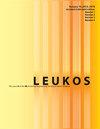Evaluation of Inrush Current in LED Luminaires Applied to Urban Lighting Based on Multi-Criteria Decision-Making Methods: A Case Study
IF 2.6
2区 工程技术
Q2 CONSTRUCTION & BUILDING TECHNOLOGY
引用次数: 0
Abstract
In recent years, a progressive renovation of public lighting has been taking place in cities, from metal halide lamps to LED luminaires. This renovation has been carried out on a large scale by replacing some luminaires with others without taking into account other elements of the circuit. Due to the high number of electronic components, LED luminaires generate inrush currents that can exceed several times the nominal current value at ignition process. This electrical phenomenon is a basic problem to be solved when planning a street lighting renovation with LED luminaires, because it is essential to have a prior estimation of the inrush current generated by the luminaires for a correct sizing of the circuit protection elements. Currently, it is difficult to predict the value of the inrush current, for this reason, the main objective is to establish an innovative methodology based on advanced multi-criteria decision-making methods (entropy and CRITIC) to predict anomalous behaviors (inrush current peaks) in LED luminaire installations and their appropriate selection in the design phase or before are mounted in the circuit to avoid negative consequences on the components and to dimension them correctly, producing cost savings in the replacement of circuit elements such as circuit breakers and switches.基于多准则决策方法的城市照明用LED灯具励磁涌流评估
近年来,从金属卤化物灯到LED灯,城市公共照明正在逐步进行改造。这种改造是在不考虑电路其他元件的情况下,通过更换一些灯具而大规模进行的。由于大量的电子元件,LED灯具在点火过程中产生的涌流可以超过几倍的标称电流值。这种电气现象是在规划使用LED灯具进行街道照明改造时要解决的一个基本问题,因为对灯具产生的涌流进行事先估计对于正确的电路保护元件尺寸至关重要。目前,很难预测浪涌电流的值,因此,主要目标是建立一种基于先进的多准则决策方法(熵和CRITIC)的创新方法,以预测LED灯具安装中的异常行为(浪涌电流峰值),并在设计阶段或安装在电路之前对其进行适当选择,以避免对组件产生负面影响,并正确确定它们的尺寸。在更换断路器和开关等电路元件时节省成本。
本文章由计算机程序翻译,如有差异,请以英文原文为准。
求助全文
约1分钟内获得全文
求助全文
来源期刊

Leukos
工程技术-光学
CiteScore
7.60
自引率
5.60%
发文量
19
审稿时长
>12 weeks
期刊介绍:
The Illuminating Engineering Society of North America and our publisher Taylor & Francis make every effort to ensure the accuracy of all the information (the "Content") contained in our publications. However, The Illuminating Engineering Society of North America and our publisher Taylor & Francis, our agents, and our licensors make no representations or warranties whatsoever as to the accuracy, completeness, or suitability for any purpose of the Content. Any opinions and views expressed in this publication are the opinions and views of the authors, and are not the views of or endorsed by The Illuminating Engineering Society of North America and our publisher Taylor & Francis. The accuracy of the Content should not be relied upon and should be independently verified with primary sources of information. The Illuminating Engineering Society of North America and our publisher Taylor & Francis shall not be liable for any losses, actions, claims, proceedings, demands, costs, expenses, damages, and other liabilities whatsoever or howsoever caused arising directly or indirectly in connection with, in relation to, or arising out of the use of the Content. Terms & Conditions of access and use can be found at http://www.tandfonline.com/page/terms-and-conditions .
 求助内容:
求助内容: 应助结果提醒方式:
应助结果提醒方式:


